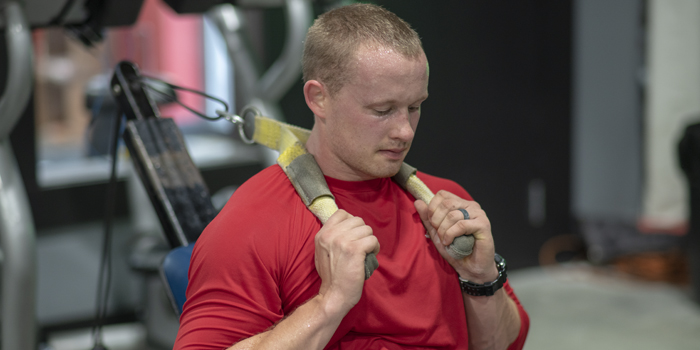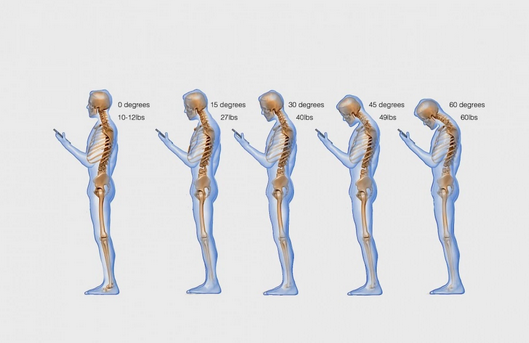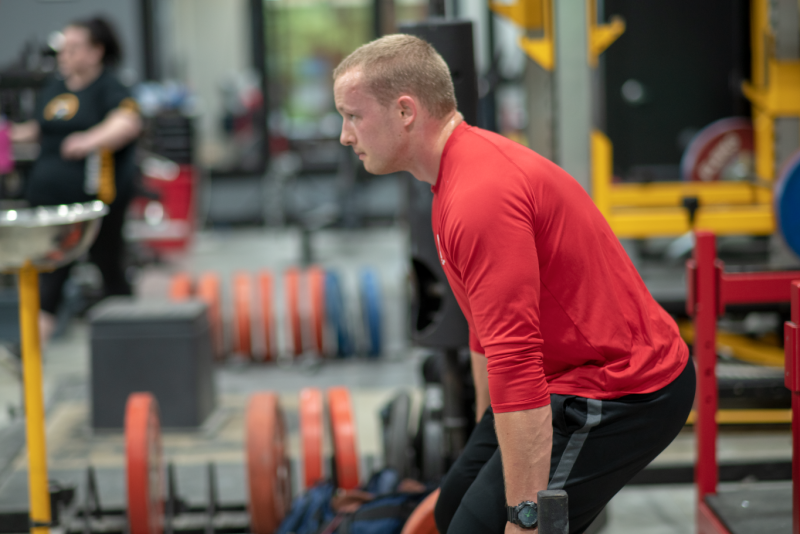
Time is a powerful thing. Time is the multiplier that turns a tiny crack on a newly paved road into a pothole or a single tree into a forest. It can be constructive or destructive depending on how it is utilized, specifically when it comes to the body.
In competitive athletics, time is a multiplier of stress and recovery. Every athlete must place stress on his or her body to drive an adaptation response in the body along with adequate recovery to increase his or her performance. Just as in the examples above, time allows for the accumulation of the training and recovery decisions that are made. The result of this accumulation over time can either improve or hinder performance and the body based on the quality and consistency of the decisions made. In short, bad decisions and good decisions in your recovery will accumulate over time.
RECENT: Reflexive Performance Reset: An Athlete-Based Model
The biggest mistake you can make is assuming that the above statements are in reference only to the accumulation of the stresses incurred while training under the bar. In reality, this portion of time is only a minuscule part of the bigger picture when it comes to recovery and stress management. Even the most dedicated lifters spend more time engaging with their phones in a week than they do with barbells. Studies have even shown that when the neck is flexed forward, such as in the act of looking down at your phone, this induces the weight of the head up to six times the normal weight. So, what do you suppose played a larger role in causing the tightness and pain in your neck: the 15+ hours spent in neck flexion or the actual time you spent loading the body?
Hansraj KK. Assessment of stresses in the cervical spine caused by posture and position of the head. Surg Technol Int. 2014 Nov;25:277-9.
The example above is an excellent illustration of how time can compound against the body when an improper movement, a repetitive movement, or a bad posture is adopted over a long period of time. Prolonged neck flexion is so damaging that at the very least, it will lead to the loss of the normal curve in the neck and, for many, to early degeneration in the joints of the spine. This kind of degeneration has the potential to reduce the range of motion in the neck and cause pain and numbness in the arms and hands. This example is also a very helpful introduction to the point being made in this article, which is that failure to address repetitive stresses and value movement during activities of daily living has a hugely detrimental effect on your body and its readiness to train. These can be mitigated by adopting proper loading and movement habits and by promoting better recovery from the stresses of everyday activities.
Repetitive Stress
Repetitive stress refers to either loads on the body or movements that are performed for a very large number of repetitions or postures sustained for long periods of time, such as sitting at a desk. In either scenario, the forces placed on the body are typically very low and place very small amounts of stress on the tissues of concern. As isolated events, these stresses cause very small amounts of damage to the body. If the body is allowed enough time to recover from this stress, no net damage occurs. The problem occurs when requisite recovery is not met between repetitions and the damage from each repetition accumulates over time. This is essentially the definition and mechanism of any chronic wear and tear condition.
To illustrate this, consider the need for recovery between sets in a training session. Let’s say you are required to do three repetitions of squats for five working sets. Why is it impossible to do 15 repetitions at the same weight instead? The answer is that the body does not have the ability to recover from each subsequent squat to complete 15 repetitions at that weight. The result will be excessive damage and fatigue to the tissues and eventually injury. This concept holds true for an attempt of 20 repetitions at a 10-rep max, 50 repetitions at a 20-rep max, etc.
No matter the intensity of load, the body is always taking on stress and requires sufficient recovery to avoid a net negative response in the tissues. Let’s say that you start the day, week, etc. with 100% of your body’s capacity for work. In other words, your gas tank is 100% full. Everything that places stress on your body—training, movement, posture, etc.—will subtract from this work capacity. In addition, any act of recovery will allow you to replenish your tissues so that you can return to 100% and perform at your optimum level.
So, how do you make sure that your daily activities are not compounding against you? The answer is to use time to your advantage and to allow your daily activities to build you up rather than break you down. In short, limit the stress on the body from your daily activities, and allow for proper recovery to ensure that your work capacity is fully restored. Here are a few tips to reduce stress on the body and to better prepare yourself to have more in the tank for your training:
1. Respect movement.
Simply put, a right and a wrong way exist to load the body. If you wouldn’t deadlift straight legged with a rounded lower back, why would you tie your shoes, pick up your kids, or do yard work with one? Many, if not practically all, lower back injuries occur at a submaximal load and are usually due to placing the spine in a completely disadvantageous position and/or not stabilizing it correctly. If you are a lifter, this could mean getting lazy with your set up, letting yourself relax during the eccentric phase of a movement, or flat out not respecting the weight that’s on the bar. A good phrase that is often repeated to avoid these types of situations is to “treat every rep like it’s your max attempt.”
The same laziness and lack of respect for load is the reason that many people plague their bodies with improper movement. The intent and awareness of each movement are key to reducing unnecessary strain on the body that could limit your performance. Now, I’m not saying you should approach picking up your kids in the exact same way as a max deadlift or to explode off your couch like you would in a box squat (although it would probably be worth a laugh or two).
The point in moving with intent and awareness is that if a foundational principle (such as inefficiency or risk of injury) dictates why hinging at the hip joint is correct whereas bending at the lower back is incorrect, these same principles apply to any variation or load of that movement. If you understand this to be true, then performing a movement incorrectly is simply either being lazy or not respecting the movement. Keep doing this repeatedly and placing excessive wear on your body, and don’t be surprised when you find yourself unable to train or even bend over without pain. Simply put, you should treat your body with respect by moving with the intent of moving correctly. When moving or maintaining constant positions, such as sitting, do so with a neutral spinal posture. Otherwise, Father Time will not be good to you.
2. Take frequent breaks from repetitive movements and postures.
Every movement creates damage to the body, even isometric movements, such as sitting. Each time you move, the body must recover from this damage, even if all it takes is a few moments. When the body is not allowed the requisite amount of time to recover, these repetitive stresses compound over time and lead to fatigue and injury. If you are not allowing time for recovery, you are slowly draining your fuel tank. This is why people can feel more fatigued after sitting all day than if they were up and about on their feet.
If you are a typical American, you likely have a job that demands a repetitive posture or movement that could be causing repetitive wear and tear to your body. Add the workload of your current training cycle on top of your job and you can see that an injury can seem to come up “all of a sudden” in the middle of a training cycle. If this sounds like you, the problem may not be that you are overtraining… it could be that you are under-recovering from tasks that aren’t even related to your training.
To combat these repetitive stresses, it is important to allow for periods of rest for the tissues. For those who sit at desks, obtaining some sort of rest period can be as simple as getting up and moving around. Movement induces blood flow into the joints and muscles, and it provides lubrication, nutrition, and oxygen to help to promote recovery from sustained postures. If you are someone who sits for long periods of time, try to remember to get up every 45 minutes to an hour and walk around or stand and stretch for 2-3 minutes.
If you drive long distances and can’t get out of your vehicle to break this cycle, try slightly adjusting the angle and lumbar support of your seat every 30 minutes. Even if you cannot break the loading cycle on the body by getting out of the car, frequently modifying your seat position changes the vector forces on the spine and thus requires different co-contractions from the spinal stabilizers.
If your job demands repetitive movement, such as hammering, screwing, or packing boxes, look for ways to offload the tissues that are involved in these movements or make sure to take “micro-breaks” to allow proper healing.
3. Ensure quality sleep.
Sleep is probably the posture that goes most unnoticed, primarily because we aren’t consciously aware of it. Sleep is the ultimate recovery tool, and the ability to recovery is highly dependent on the quality of sleep obtained. Waking up sore or feeling worse than when you went to bed is always a warning sign that your sleep quality has been affected, but it doesn’t necessarily point you to what to do to improve your quality of sleep. The easiest way to ensure proper sleep quality is to first address your sleep posture. Most people spend a third of their lives sleeping, which means that the position in which you lie while sleeping can be a huge stressor on your body if you are in a bad position.
MORE: Sleep Strategies for Strength, Speed, and Size
Proper positioning requires the support of the spine and extremities in a neutral position to allow as much relaxation and recovery from your soft tissues. If you are having to rely on your muscles to stabilize your body throughout the night, don’t be surprised to wake up and feel soreness in your muscles or pain in your joints due to a lack of stabilization. For this reason, you need to sleep on your back or on your side. Stomach sleeping not only provides very little support to the lower back but also requires you to turn your head completely to one side, which forces your neck to the end of its range of motion in one direction. For this reason, side and back sleeping are the only two postures that allow for the neutral positioning and support of the body.
If you wake up with neck pain, you may need to address pillow positioning. Remember that the goal is a neutral position. Side sleeping requires enough pillows to keep your head from drooping down. At the same time, you don’t want to use too many pillows, as this will crane your head up. Using your arms to support your neck can be a subconscious message that your head needs more support.
If you wake up with lower back pain, your mattress may be an issue, but before you drop a lot of money on a new mattress, try positioning a pillow under your knees when on your back, or between your knees when on your side. Again, this helps to support a neutral position in the lower back and pelvis. It usually is not hard to determine if your sleep quality is good or bad, and little changes in your sleeping habits can be the difference between waking up sore and waking up refreshed and ready to perform.
The body is a highly adaptive organism that is under constant change. Just as a business or a relationship is never staying constant, your body is also either depreciating or building itself up. The mental and physical stresses placed on the body are key in determining the side of equilibrium at which the body is swinging at a given moment. Even the smallest stresses we place on our body can compound over time and are often the most dangerous due to the seemingly benign load amounts they accrue in a given rep or moment. What many find after they are hindered by their pain, however, is not only the importance of maintaining a proper posture and movement during daily activities but also the large role that these bad habits and decisions have played in their pain.
Working toward ultimate performance, pushing the envelope for competition purposes, or anything more than just basic health and fitness is an absolute luxury and most certainly NOT a right. Mistreating your body and ignoring concepts such as moving well outside of the gym and the lifting platform can strip away this luxury very quickly. Ultimate performance is a lifetime commitment, 24/7. – Stuart McGill and Brian Carroll.
Dr. Tyrel Detweiler provides care for general public and athletes across all sports, ages, and experience levels with a majority of his experience in athletics coming from working at the collegiate level and in strength sports. He holds a Doctorate in Chiropractic and a Master’s of Science in Sports Rehabilitation. Dr. Detweiler was a member of Mizzou’s Sports Medicine Team from 2014-2015 and served as the as the chiropractic physician for all University of Memphis Athletics from 2015-2018. Dr. Detweiler was an offensive guard at the University of Iowa and has competed in powerlifting and strongman since 2010. He is a national and international presenter for Reflexive Performance Reset and is the co-owner of Hybrid Performance Group. Hybrid Performance Group provides performance and results-based chiropractic and physical therapy to the athletes and community of Columbus, OH. Hybrid Performance Group’s mission is to take the knowledge, experiences, and quality of care developed working at the collegiate and professional level of athletics and pass them on to amateur athletes and the general public. Dr. Detweiler can be reached at drdetweiler@hybrid-performance.net.












